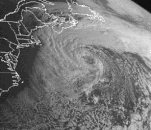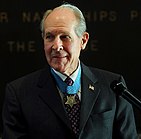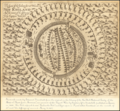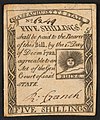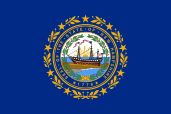Portal:New England
The New England Portal New England is a region comprising six states in the Northeastern United States: Connecticut, Maine, Massachusetts, New Hampshire, Rhode Island, and Vermont. It is bordered by the state of New York to the west and by the Canadian provinces of New Brunswick to the northeast and Quebec to the north. The Gulf of Maine and Atlantic Ocean are to the east and southeast, and Long Island Sound is to the southwest. Boston is New England's largest city and the capital of Massachusetts. Greater Boston is the largest metropolitan area, with nearly a third of New England's population; this area includes Worcester, Massachusetts, the second-largest city in New England, Manchester, New Hampshire, the largest city in New Hampshire, and Providence, Rhode Island, the capital of and largest city in Rhode Island. In 1620, the Pilgrims established Plymouth Colony, the second successful settlement in British America after the Jamestown Settlement in Virginia, founded in 1607. Ten years later, Puritans established Massachusetts Bay Colony north of Plymouth Colony. Over the next 126 years, people in the region fought in four French and Indian Wars until the English colonists and their Iroquois allies defeated the French and their Algonquian allies. (Full article...) Selected article
The 1991 Perfect Storm, also known as the Halloween Nor'easter of 1991, was a nor'easter that absorbed Hurricane Grace and ultimately evolved into a small hurricane late in its life cycle. The initial area of low pressure developed off Atlantic Canada on October 28. Forced southward by a ridge to its north, it reached its peak intensity as a large and powerful cyclone. The storm lashed the East Coast of the United States with high waves and coastal flooding, before turning to the southwest and weakening. Moving over warmer waters, the system transitioned into a subtropical cyclone before becoming a tropical storm. It executed a loop off the Mid-Atlantic states and turned toward the northeast. On November 1 the system evolved into a full-fledged hurricane with peak winds of 75 miles per hour (120 km/h), although the National Hurricane Center left it unnamed to avoid confusion amid media interest in the predecessor extratropical storm. It later received the name "the Perfect Storm" after a conversation between Boston National Weather Service forecaster Robert Case and author Sebastian Junger. The system was the fourth hurricane and final tropical cyclone in the 1991 Atlantic hurricane season. The tropical system weakened, striking Nova Scotia as a tropical storm before dissipating. (Full article...)
Selected biography
Thomas Jerome Hudner, Jr. is a retired officer of the United States Navy and a former naval aviator. He rose to the rank of captain, and received the Medal of Honor for his actions in trying to save the life of his wingman, Ensign Jesse L. Brown, during the Battle of Chosin Reservoir in the Korean War.
Born in Fall River, Massachusetts, Hudner attended Phillips Academy and the United States Naval Academy. Initially uninterested in aviation, he eventually took up flying and joined Fighter Squadron 32, flying the F4U Corsair at the outbreak of the Korean War. Arriving near Korea in October 1950, he flew support missions from the USS Leyte. On 4 December 1950, Hudner and Brown were among a group of pilots on patrol near the Chosin Reservoir when Brown's Corsair was struck by ground fire from Chinese troops and crashed. In an attempt to save Brown from his burning aircraft, Hudner intentionally crash-landed his own aircraft on a snowy mountain in freezing temperatures to help Brown. In spite of these efforts, Brown died of his injuries and Hudner was forced to evacuate, having also been injured in the landing. (Full article...) Selected picture Credit: Arthur J. Stansbury (1848) Sketch of Massachusetts native and former President John Quincy Adams after the stroke that would claim his life
General images -The following are images from various New England-related articles on Wikipedia.
Did you know (auto-generated)
Related portalsMore did you know...
Selected State
New Hampshire
Incorporated 1776 Co-ordinates 44°N 71.5°W New Hampshire, named after the southern English county of Hampshire, is the 5th least extensive and the 9th least populous of the 50 U.S. states. It became the first post-colonial sovereign nation in the Americas when it broke off from Great Britain in January 1776, and six months later was one of the original thirteen states that founded the United States of America. In June 1788, it became the ninth state to ratify the United States Constitution, bringing that document into effect. New Hampshire was the first U.S. state to have its own state constitution. It is known internationally for the New Hampshire primary, the first primary in the U.S. presidential election cycle. Concord is the state capital, while Manchester is the largest city in the state. It has no general sales tax, nor is personal income (other than interest and dividends) taxed at either the state or local level. (Full article...) WikiProjectsAssociated WikimediaThe following Wikimedia Foundation sister projects provide more on this subject:
Discover Wikipedia using portals |

